
Very severe Typhoon Shanshan has brought damaging winds, torrential rain with landslides as scientists at Imperial College model the effects of climate change on Shanshan's intensity
Typhoon Shanshan hit Japan on Thursday 29th August with mass evacuations as the slow-moving cyclone made landfall. It crawled over the southern island of Kyushu with torrential rain and some damaging winds. Imperial College, London said that Shanshan was 7.5% more intense due to climate change.
This was the 10th typhoon identified by the Japanese Meteorological Agency (JMA) this year, with sustained winds of around 115mph (Cat 3 equivalent) as it approached the main islands. It arrived as a Cat 1 equivalent cyclone with winds around 85mph. It is the slow movement of Shanshan that is causing concerns into the weekend with more heavy rain forecast. Intense rainfall has already triggered landslides.
With wild seas hitting the south coast of Kyushu, the hurricane-force winds knocked over many trees and powerlines causing outages. Major factories and shops closed on Thursday and the disruption continues. Train services and flights across a wider part of Japan have been cancelled or delayed.
“As of August 29, parts of Miyazaki and Kagoshima prefectures reported rainfall accumulations topping 400 millimetres (15.75 inches) in 24 hours. Since August 26, the city of Ebino in the Miyazaki prefecture has been deluged with over 840 millimeters (33 inches) of rain.” NOAA
Ebinokogen in the far south received 885mm of rain in 72 hours that’s 35” and around 1.5 times the total amount that it would expect to receive on average during the entire month of August.
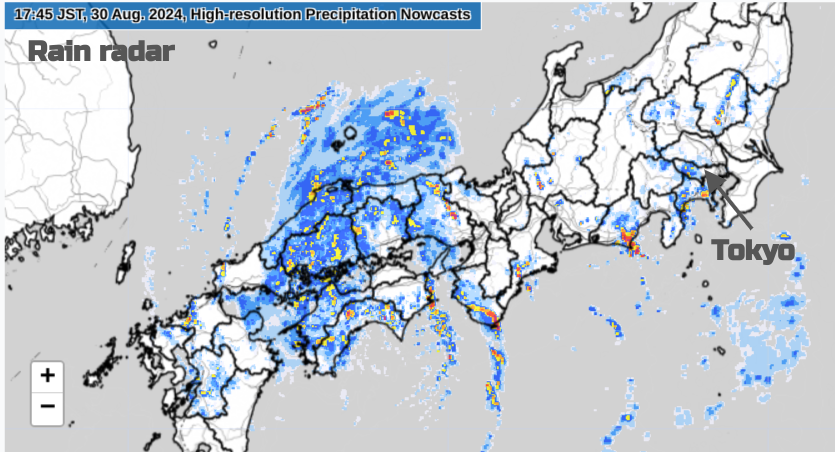
Advisory notices had been issued to residents to be ready to evacuate. This would have affected more than 4 million people across the country, but in the end, it was around 30,000 people who had to move, mainly in Kyushu in the far southeast.
Barely two weeks ago evacuation notices were issued for parts of Japan including nearer Tokyo for Typhoon Amphil.
There are still gale, high wave, heavy rain and thunderstorm warnings as a Tropical Storm moves between eastern Honshu and Shikoku. There are concerns about landslides and flooding with Heavy Rain advisories over the Tokyo metropolitan region along with the travel disruption.
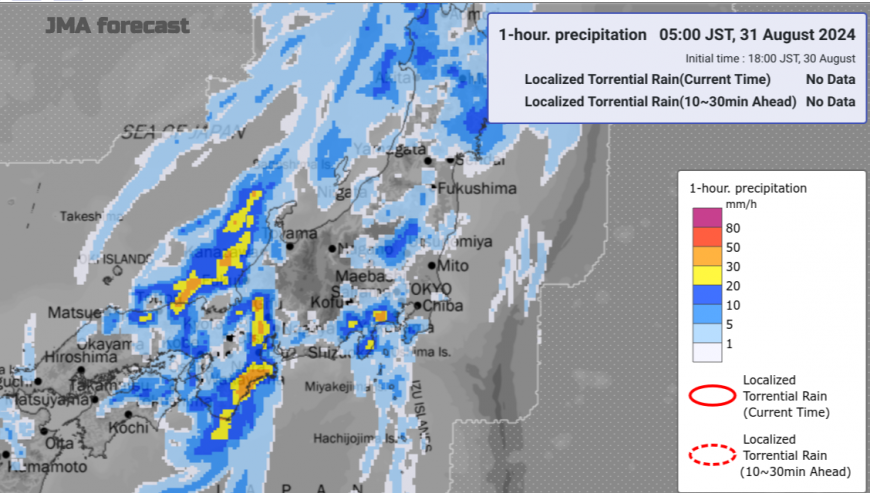
This typhoon intensified thanks to unusually warm waters in the Philippine Sea. Provisionally its sea-level pressure fell to 935hPa which sets Shanshan apart as a significant ‘Very Severe Typhoon’, the strongest in decades. There was plenty of moisture and warmth to fuel this typhoon and parts of Japan and there are Heat Stress warnings even now that the most dangerous winds have eased. The lack of power means that air conditioning units are not working.
“Typhoon Shanshan made 7.5% more intense and 26% more likely by climate change” Imperial College
Climate scientists at Imperial College London can model the influence of climate change on cyclones around the world. Communities need to build resilience and attempt to reduce potential damages as “the climate warms, the most powerful tropical cyclones are expected to become more intense and more likely.”
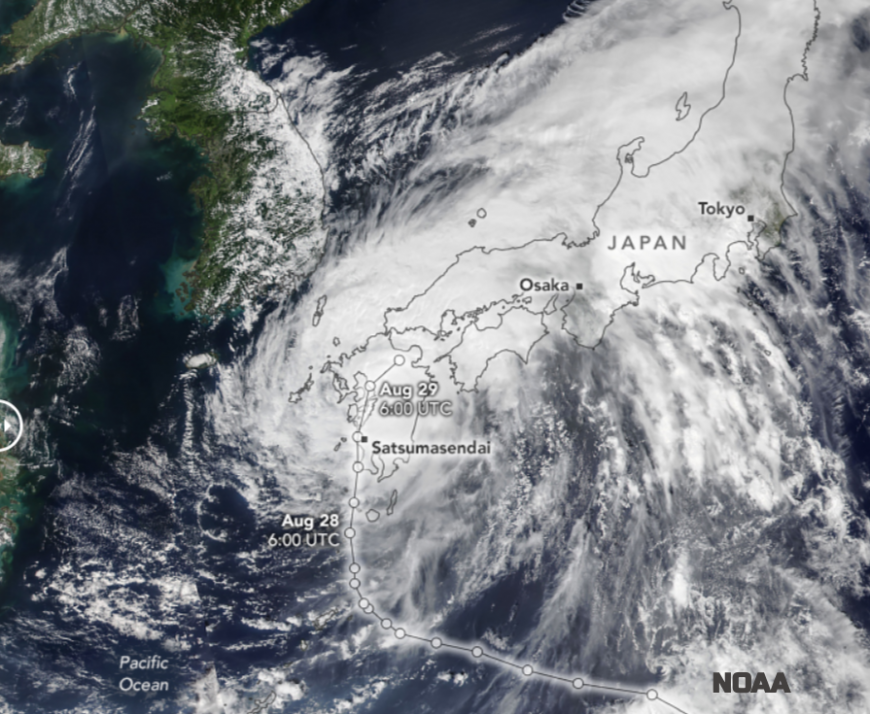
“Using an innovative attribution method, climate scientists quantified the influence of climate change on Typhoon Shanshan's powerful winds that affected Japan’s southern island, Kyushu. The Imperial College Storm Model (IRIS) analysed synthetic storm tracks to determine what the intensity and likelihood of typhoons like Shanshan would be without 1.3°C cooler world to understand changes due to human-caused climate change.”
Attribution modelling starts by choosing an extreme event, and one that has impacted a large population would seem obvious, to draw attention to the work. There are several steps; collecting and assessing observations and estimating probability and trends from these, climate model evaluation, estimating modelled hazard trends and their significance, synthesis of the attribution of the hazard, assessment of trends in vulnerability and exposure, and communication. Pathways and pitfalls in extreme event attribution Climatic Change 166, 13 (2021).
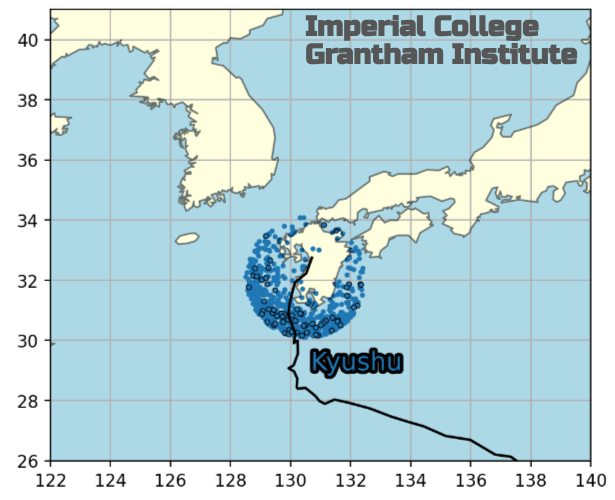
The IRIS Model simulated thousands of typhoons close to Kyushu. This allowed “scientists to calculate a range of possible intensities in both a pre-industrial colder world or our current climate with 1.3°C of warming.”
Image above - Events contributing to the attribution analysis. Black circles show the location of the maximum intensity of tracks of observed typhoons in the vicinity of Kyushu. Blue dots show the same for a sample of tracks simulated by IRIS. The black line shows the observed path of Typhoon Shanshan.
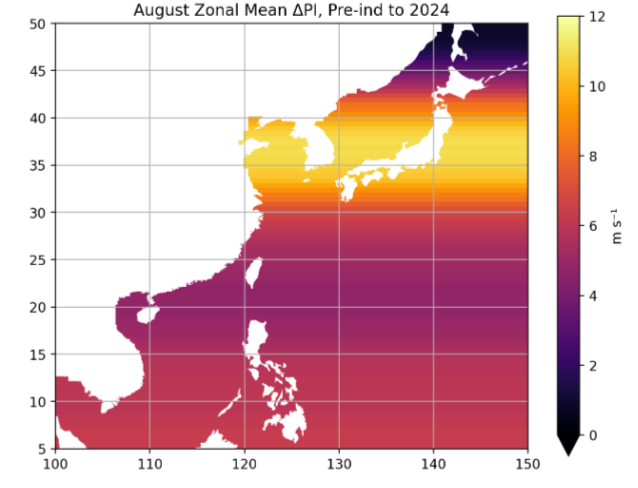
Image above - Estimated zonally-averaged change in August potential intensity from pre-industrial to present day expressed in terms of typhoon sustained maximum wind speed.
The study looked at potential intensity which uses sea surface and air temperature, alongside air humidity data, to predict maximum typhoon wind speed.
“The IRIS model also found that devastating typhoons like Shanshan have become 26% more likely due to climate change. In other words, with 1.3°C of warming, the expected frequency of conditions similar to Typhoon Shanshan has risen from around 4.5 times per decade to 5.7 times per decade. “
Japan has seen two disruptive typhoons this month. Typhoons are part of the climate but research is vital looking at their intensity and frequency. Shanshan has caused at least 4 deaths, 96 injuries and 1 person is still missing. There has been widespread disruption to travel and industry with power outages, flooding and landslide damage. The heat and rains continue. The hot summers are becoming more ferocious with records being broken as heatwaves return and persist. Extreme weather events are causing serious impacts on people’s lives in Japan, and Shanshan is just another episode.
Typhoon Shanshan IRIS attribution analysis
Japan weather in the Netweather community thread
Loading recent activity...